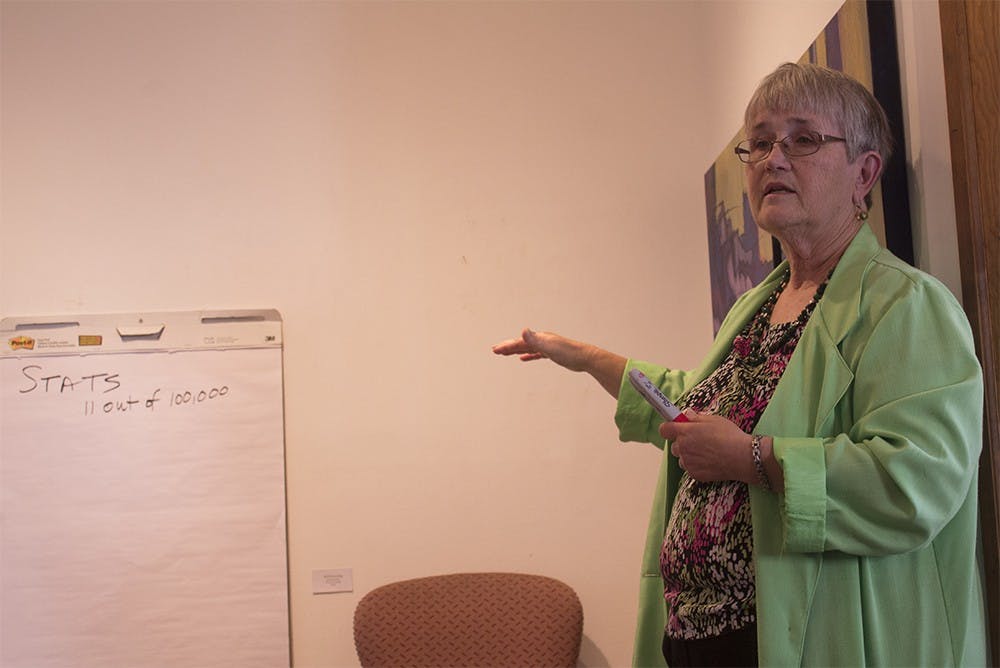Houston wore a bright green lab coat with rolled up sleeves; colorful acrylic paintings of mountains and plants covered the walls.
Suicide may seem like an unusual topic for such a cheery space, but the goal of Houston’s talk was for participants to learn to discuss suicide openly.
“If you leave here with one thing today, leave with the message: We have to talk about it,” Houston said.
Houston gave the talk at 5:30 p.m. Tuesday at the Venue. Houston’s lecture was part of a series of talks for National Suicide Prevention Month.
The therapist began by presenting the statistics. Nationally, 11 out of 100,000 Americans die by suicide per year, but in Indiana it’s higher — 12 or 13 out of 100,000.
“It’s relevant, it’s our problem, it’s not just something out there,” she said. “Why is it so hard to talk about this? We can talk about war. We can talk about car accidents. We can talk about HIV/AIDS.”
Houston’s hands danced unhurriedly to the rhythm of her words as she calmly invited the room to consider why their culture so rarely discusses suicide. Audience members pointed to stigma and fear associated with it.
“It feels politically incorrect somehow,” said audience member Michelle Martin-Coleman, who helped organize the talks and whose husband runs the Venue.
Houston encouraged her listeners to be people the community can depend on to talk about suicide.
The idea that discussing suicide will encourage others to do it is a myth, Houston said.
She mentioned other myths as well — that people who talk about wanting to kill themselves aren’t serious about it, that when people start to come out of depression they are no longer at risk and that once a person has tried to kill themselves they will not try it again.
“So, what do you want to do about this?” Houston asked.
She presented a model called TALK, which stands for Talk, Ask, Listen and Keep safe. Houston assured her audience that it was “simple, not a bunch of psychological gobbledygook.”
Houston encouraged the audience members to look for calls for help from people who might be considering killing themselves.
“You are more likely to run into someone who is suicidal than I am,” she said. “The front line is the general public.”
Houston said the best way to raise the topic is to ask directly. Even if a person does not want to confide in you, asking lets him or her know you are not afraid to talk about suicide, she said.
The final step of TALK, Keep safe, consists of coming up with a plan. For example, it might help to take the keys of someone who has said they will drive dangerously fast or request to keep the pills of someone who said they will overdose later.
At that point, it’s all about helping them put off the decision to kill themselves and seek assistance. The police, family members and the emergency room are all good resources.
When in doubt, Houston said, keep them talking.
“Every moment that the person is with me, they are still alive,” Houston said.






